Note: This website was automatically translated, so some terms or nuances may not be completely accurate.
Repeating Challenging Experiences, Bringing Them into Daily Life ~ Yanmar Museum
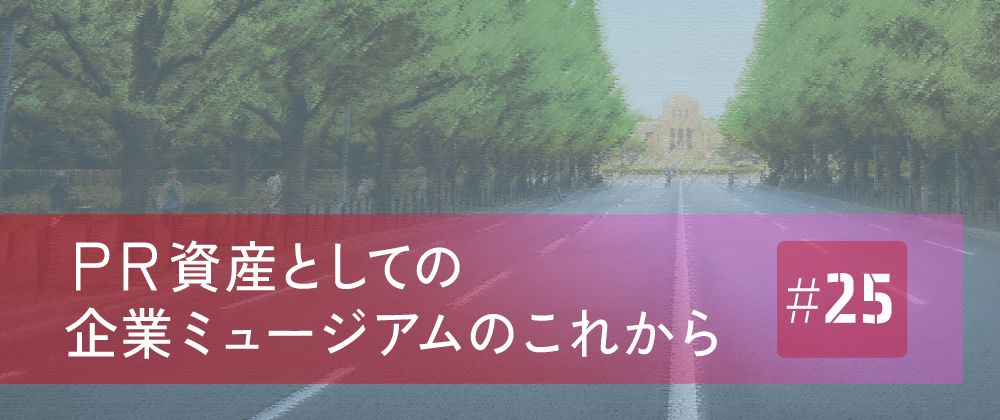
Phrases like "a passion for manufacturing," "a culture that encourages challenge," and "the founder's spirit lives on" are often seen in discussions about corporate museums. At the museum we visited this time, rather than elevating the founder's challenging spirit into something grandiose, it felt as though they had rooted it in their daily work, truly making it part of their culture, and genuinely striving to connect it to the future. This article examines the "Yanmar Museum," showcasing Yanmar's engine and energy system businesses across the fields of land, sea, and city. Through the museum experience, we explore what kind of design and ingenuity are needed to convey a company's spirit and culture.
Yuna Mori (PR Consulting Dentsu Inc.)
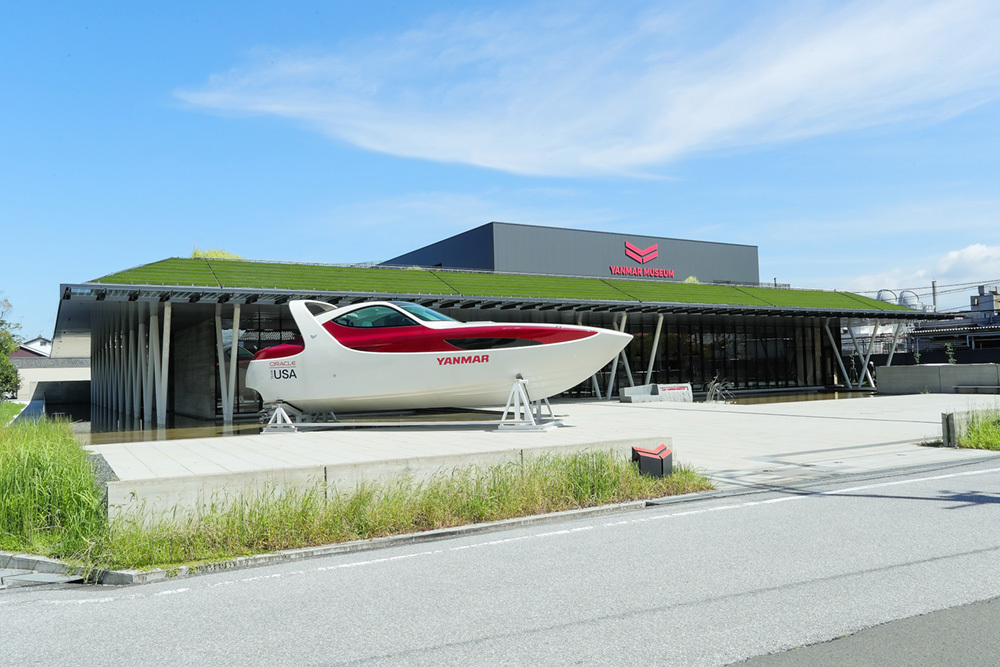
Making Farming Easier Through Mechanization
The Yanmar Museum is located on the shores of Lake Biwa in Nagahama City, Shiga Prefecture. It occupies part of the former Nagahama Factory site, situated across the Hokuriku Main Line from Lake Biwa, about a 10-minute walk from JR Hokuriku Main Line Nagahama Station. During the Edo period, Nagahama flourished as a temple town for Daitoji Temple and a post station on the Hokoku Highway. Today, it remains a tourist destination featuring preserved townhouses and black-walled buildings that showcase its historic streetscape. Furthermore, just ten years after Japan's first railway opened between Shinbashi and Yokohama, in 1882 (Meiji 15), a railway line originating from Nagahama Station opened, preceding the full opening of the Tōkaidō Line. This established Nagahama as a thriving railway hub.
Yamaoka Magokichi (hereafter referred to without honorifics), the founder of Yanmar, was born in 1888 (Meiji 21) in this very land of present-day Nagahama, the child of a poor farmer. This was six years after the "land steam engine" (steam locomotive) began running through Nagahama.
Yanmar Holdings Co., Ltd., which operates the Yanmar Museum, was formerly Yanmar Co., Ltd., and before that, Yanmar Diesel Co., Ltd. As the name suggests, Yanmar's original foundation was the development and manufacture of diesel engines. The company's business origins lie in Magokichi's fascination with the safety, economy, and durability of diesel engines, leading him to develop and manufacture small diesel engines.
When Sunji was a child, Japan was still largely devoid of engine-powered machinery in everyday life. He happened to grow up in an area where steam locomotives ran at a relatively early stage in Japan. Seeing these locomotives transport vast numbers of people and goods with tremendous power and speed, it's easy to imagine he sensed the potential for this energy to elevate people's lives to a different dimension.
Sonkichi wanted to ease the burden of farm work through mechanization. Before developing the small diesel engine, he successively created oil-powered devices like motorized rice hullers, motorized rice polishers, and motorized pumps. Later, while visiting Germany seeking inspiration for new ventures, he encountered the diesel engine. After returning home, he threw himself into developing a small diesel engine. On December 23, 1933 (Showa 8), he finally succeeded in developing the "Yanmar Horizontal Water-Cooled Diesel Engine HB Type" – the world's first small, practical diesel engine.
The diesel engines he saw in Germany stood 3.2 meters tall and weighed 5.8 tons—far too large for widespread adoption. His development focused on miniaturization, envisioning a power source accessible to more people for diverse applications. Even the successful miniaturized HB model stood 95 centimeters tall and weighed 500 kilograms, making it too heavy for one person to easily move. However, the improved S model, installed in fully automatic rice hullers and other equipment, gradually transformed people's lives.
Son's spirit of relentless challenge through trial and error, driven by the "fuel for the nation" ethos, lives on today in Yanmar's brand statement: "A SUSTAINABLE FUTURE."

Construction of the Yanmar Museum began as part of the company's 100th anniversary commemorative projects in 2012, opening in March 2013. Initially focused on exhibits teaching agriculture and manufacturing, it reopened in October 2019 as a Challenge Museum where visitors learn through hands-on experiences. This shift followed the introduction of a new brand statement in 2015: "A SUSTAINABLE FUTURE—Toward New Prosperity Through Technology."
For the renewal, the concept "Let's Try! Exciting Future Challenge" was adopted to reflect this spirit. The museum was designed so that children, who will shape future society, can learn through seeing, touching, and experiencing the importance of taking initiative and persevering through ingenuity. This article examines how the museum expresses "A SUSTAINABLE FUTURE" and the founding spirit of "fuel for the nation" that inspired it, focusing on three aspects: "target visitor definition," "mechanisms to encourage repeat visits," and "connectivity with daily life."
Target Audience: "Families with Fifth-Grade Children"
For the Yanmar Museum's renewal, the target visitor was set as "families with fifth-grade children." Before the renewal, as mentioned earlier, the focus was on product displays, the founder's achievements, and the company's history, attracting many adult educational tours, making adults the core visitors. For the renewal, the museum considered how best to pass on the founder, Magokichi Yamaoka's "I want to help people in need" and "I want to create a new future." They considered what would best allow visitors to experience the future envisioned by Yanmar. This led to the age setting of "fifth graders" and the approach of "hands-on experiences."
"Nurturing a spirit of challenge" isn't something achieved overnight. It's crucial to have the desire to challenge oneself, a supportive environment that allows for failure, and opportunities to try again. At what age can children grasp the idea that taking on challenges can lead to a positive future through a single day or a few hours of experience? Fifth graders seem an appropriate age to truly feel this while experiencing the museum's content.
Another key point is that the target audience isn't just "fifth graders" but "families with fifth graders." While elementary school students in Shiga Prefecture may visit as part of field trips, private visits by elementary students alone are rare. Therefore, it makes sense to consider the entire family. In fact, about half of the visitors are adults, with elementary and junior high students making up roughly a quarter, and preschoolers the remaining quarter.
Throughout the Yanmar Museum, you can sense thoughtful design choices made with this "family" in mind. Take the height of the sinks, for example. Having sinks at a height where small children can reach them to wash their hands without needing help greatly encourages their desire to "give it a try." Additionally, diaper-changing stations and nursing rooms are provided, clearly signaling that infants and toddlers are welcome. This consideration addresses the hesitation parents might feel about visiting with older children, concerned about the lack of facilities. While a small detail, it encourages repeat visits.
Before entering the main "Challenge Area" of the museum, visitors watch the founder's challenge story in a projection mapping theater. While preschoolers may struggle to fully grasp the story, the concept that "challenging yourself makes the future exciting" is conveyed in a way they can intuitively understand. Here too, you sense the target audience of "families" with fifth-grade children.
The "Challenge Area" is broadly divided into three sections: "CITY," "SEA," and "LAND." Some experiential content has specific age targets, like elementary school students or ages 3 and up, while other content has no age restrictions. Even activities targeted at ages 3 and up can be made more challenging by increasing the difficulty level of the controls. This allows children of various ages to enjoy the same experience at a level suitable for them, which is a major appeal.
Incidentally, "CITY," "SEA," and "LAND" represent the fields where Yanmar conducts its business. In the "Sustainable Energy Climbing" attraction in the CITY area, participants climb a wall designed to resemble a building vertically. The energy generated from climbing powers lights within the building itself. This unique content links the challenge with the energy sector, a key area of Yanmar's business.
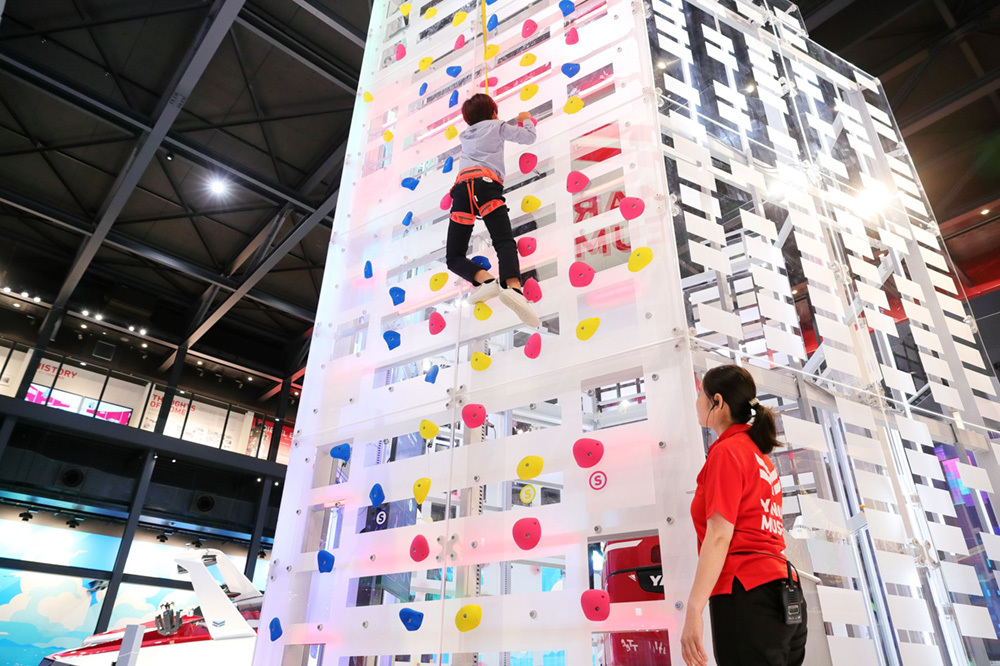
Mechanisms that make you want to come back again and again are everywhere
Next, let's look at the "mechanisms encouraging repeat visits." At the Yanmar Museum, visitors receive a "Yanmar Card" at the reception desk when purchasing tickets. By scanning the QR code printed on the card at designated machines, visitors can experience content within the museum. Based on their experience results, they are awarded "Yanmar Points."
Points earned that day are displayed on a large screen called "My Earth," visible from the Challenge Area. This allows visitors to compare their results with others who experienced the same activities that day, encouraging them to try more challenges. Additionally, visitors can register a nickname on the card at a registration machine within the Challenge Area, making the card reusable for future visits.
Points accumulate and remain valid for one year. These Yanmar Points aren't limited to the Challenge Area. Accumulating points grants corresponding ranks, which unlock discounts at the museum's shops and restaurants based on your rank. Repeated challenges yield benefits. Parents accompanying their children will also appreciate the discounts.
The museum is two stories. Ascending from the first-floor Challenge Area leads to exhibition spaces and the "Challenge Room." Outside is the "Yanmar Terrace," featuring a "Roof Biotope." During our February visit, the winter biotope gave a quiet impression, but this too is one aspect of the biotope, making us want to see it in different seasons. Just before this area is the "Oniyanma no Yu" footbath. This uses water heated by reusing the heat generated during power generation within the museum. Having such relaxing spaces available is another reason that makes you want to come back.
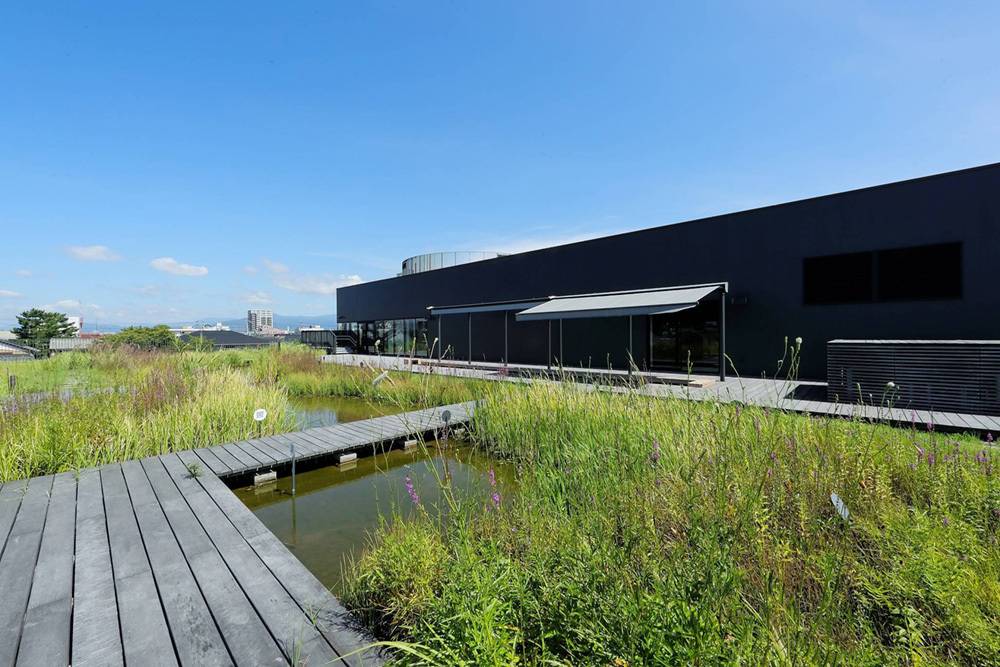
Speaking of rest areas, the museum also features a restaurant on the first-floor entrance level, accessible without paying the admission fee. I felt the menu design and pricing at this restaurant were also part of the "mechanism to encourage repeat visits."
The "Tractor Plate" (¥900 including tax), featuring a plate shaped like a Yanmar tractor, gets everyone excited, not just kids. While some use it for lunch, it's also perfect as a snack after trying out many challenges and feeling a little peckish. To elaborate, the rice ball fillings range from standard options to menus incorporating regional and seasonal elements, ensuring visitors from afar or returning in different seasons won't get bored. The presence of challenges like cards and points, combined with features like the biotope and restaurant, reveals thoughtful touches throughout designed to make you want to revisit in different seasons.
The challenges are seamlessly connected to daily life
Finally, let's examine "connectivity to daily life." The "Bento Challenge" in the challenge area is a content where you pack a bento box with its contents on a touch panel screen. After initially setting your age and gender, the total energy required is displayed, and you pack various bento side dishes cooked by methods like boiling, steaming, or frying into the bento box.
At the end, you receive a score based on nutritional balance and visual appeal. This provides a simulated experience, showing that different cooking methods yield different energy levels and that considering color coordination can make preparing bento boxes exciting. This content can be incorporated into daily life. For example, during dinner, you could say, "Today's shumai was steamed. Shumai can also be fried, which increases the energy content and gives it a crispy texture," sparking greater interest in food.

While this content is just one example, the "challenges" experienced at the museum don't end with the moment; they connect to daily life, helping visitors understand they can apply these concepts in their own routines. As mentioned earlier, fostering a "challenge spirit" requires a desire to try new things, an environment that allows for failure, and opportunities to try again. The Yanmar Museum offers numerous such experiences, creating daily opportunities to apply these concepts.
Building Corporate Fans and Catalyzing Change Through the Museum
While companies establish museums for various reasons, conveying the founder's spirit is a common goal shared by many. Transforming this into museum content that blends with the company's culture and allows visitors to experience it firsthand is an extremely challenging task.
Junichi Tamura, the museum director who guided us through the facility, shared: "We often hear from outsiders that Yanmar is a kind company. They let you pursue what you want to do. I've never heard of anyone being blamed for a failure. The culture is one where everyone cooperates to foster people who aren't afraid to try things and learn from mistakes. This year's president's New Year's address reflected this sentiment, and we are actively building systems to support it."
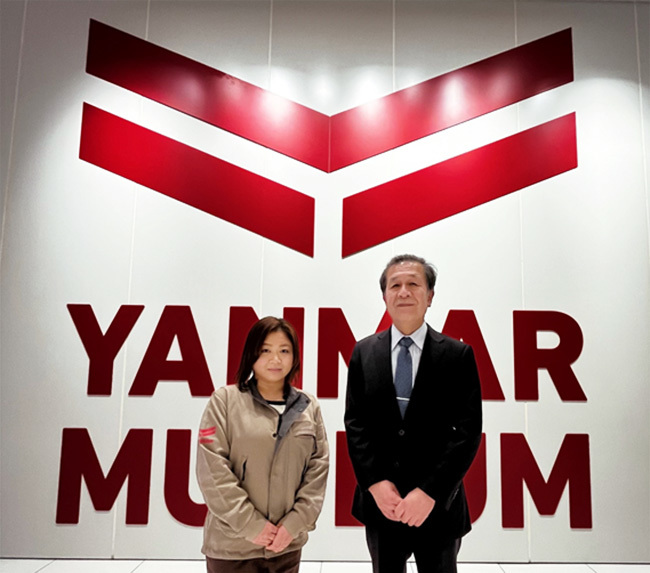
This impression wasn't just from the museum's content; the physical facility itself embodied that philosophy. I felt this must be Yanmar's culture, and the Yanmar Museum is its embodiment. And honestly, I became a fan of Yanmar.
Establishing and operating a corporate museum requires significant funds, time, and personnel. If you're going to invest that much effort, creating fans for the company and sparking change could make the museum a beloved place.
[Editor's Note] (From the Web Dentsu Inc. Editorial Department)
The museum's unique approach lies in targeting "families with fifth-grade children." By any measure, this is an extremely narrow target audience. However, it makes perfect sense when explained as a desire to pass on the founder's spirit of challenge to the next generation.
When it comes to advertising and PR, we inevitably set broad targets encompassing all ages and genders. This stems from the desire to create a brand loved by everyone. Yet, this often ends up merely saying, "Nice to meet you. Everyone, nice to meet you."
The Yanmar Museum has a clear purpose and ideal. While its target audience may seem narrow at first glance, its message resonates universally. When we hear "challenge," it often devolves into mere platitudes about spirit. But that's not it. By pouring soul into each and every product we create, we want to make the world just a little bit better. As the audience for conveying this sentiment, the target setting of "families with fifth-grade children" is deeply relatable.
Was this article helpful?
Newsletter registration is here
We select and publish important news every day
For inquiries about this article
Back Numbers
Author

Yuna Mori
PR Consulting Dentsu Inc.
Joined the company in 2009. A PR consultant and producer who views PR as encompassing all communication sent and received by companies and organizations. Handles a wide range of projects, from marketing communications to PR for social issues including gender. Returned to work after taking maternity and childcare leave twice; mother of two children.



